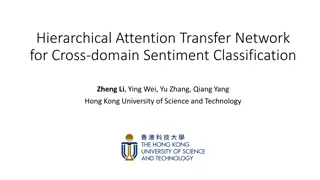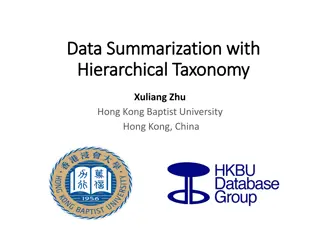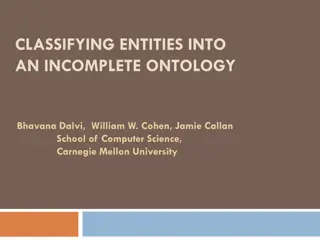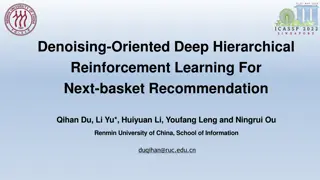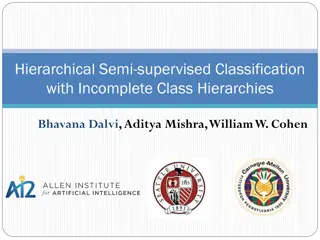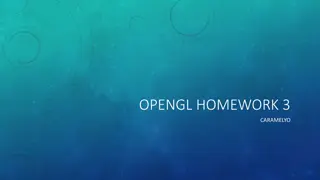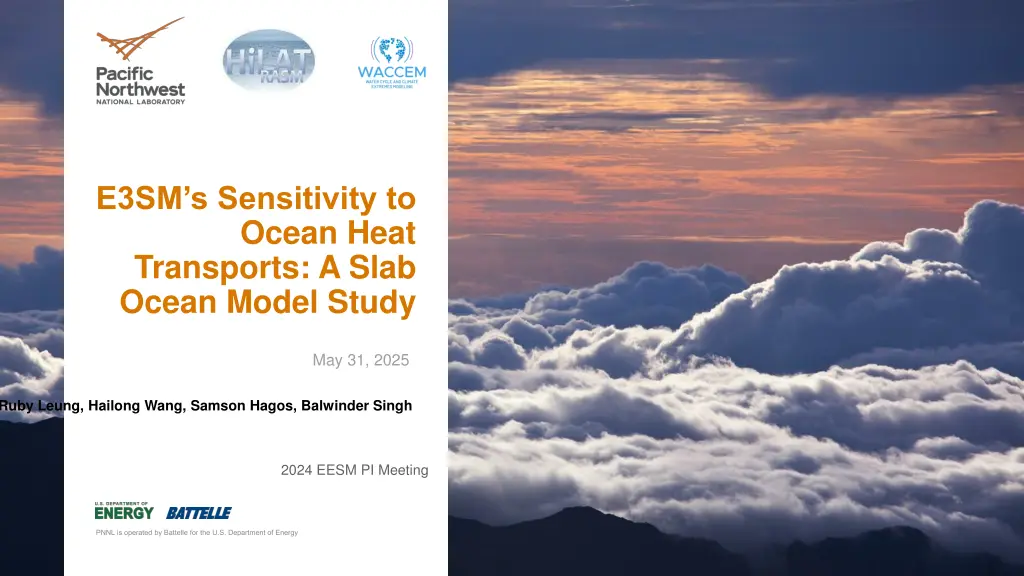
Ocean Heat Transport Sensitivity in E3SM Slab Ocean Model Study
Explore the sensitivity of E3SM to ocean heat transports through a slab ocean model study. Investigate changes in baseline climate with different ocean heat transport forcings and understand the response of low-level clouds and shortwave cloud forcing. Discover research gaps and challenges in the study of the Simplification of the Dynamic Ocean model.
Download Presentation

Please find below an Image/Link to download the presentation.
The content on the website is provided AS IS for your information and personal use only. It may not be sold, licensed, or shared on other websites without obtaining consent from the author. If you encounter any issues during the download, it is possible that the publisher has removed the file from their server.
You are allowed to download the files provided on this website for personal or commercial use, subject to the condition that they are used lawfully. All files are the property of their respective owners.
The content on the website is provided AS IS for your information and personal use only. It may not be sold, licensed, or shared on other websites without obtaining consent from the author.
E N D
Presentation Transcript
E3SMs Sensitivity to Ocean Heat Transports: A Slab Ocean Model Study May 31, 2025 Oluwayemi Garuba, Phil Rasch, Ruby Leung, Hailong Wang, Samson Hagos, Balwinder Singh 2024 EESM PI Meeting
Simplification of the Dynamic Ocean model Dynamic Ocean model Static Slab Ocean Model Ocean Mixed layer (?) Ocean Mixed Layer Prescribed OHC ?(?,?) Reaches equilibrium within 20 years! Quick turnaround for regional refinement, equilibrium climate sensitivity, locking and overriding experiments. Ocean Deep layer 2
E3SMv2-SOM can reproduce the baseline climate of the fully coupled model it is derived from. Sea Surface temperature Precipitation SOM forcing Sea ice extent (left) and volume (right) 3
How does the E3SM baseline climate change with different ocean heat transport forcings? Model: E3SMv2-SOM Forcing:1850 atmospheric/land conditions Ocean boundary condition and forcing: MLD and initial SST from v2.LR.piControl years 481-500 climatology; OHC derived from different fully coupled simulations with different ocean heat transport strengths Ocean heat convergence forcing difference Experiments: 1.Low-OHT SOM.v2.LR-OHC (OHC derived from the v2.LR.picontrol fully coupled) SOM.v1.LR-OHC (OHC derived from the v1.LR.picontrol fully coupled) 2. High-OHT SOM.v1-HR-OHC (OHC derived from the v1.HR.control fully coupled) SOM.POP-OHC (OHC from the CESM 1 fully coupled) Ocean Heat transport 2 v2.LR-OHC v1.LR-OHC v1.HR-OHC POP-OHC 1.5 1 Petawatts 0.5 0 -0.5 -1 4 -80 -60 -40 -20 0 20 40 60 80 Latitude
Sea surface temperature Surface air temperature Net TO A Flux 3 v2.LR-OHC v1.LR-OHC v1.HR-OHC POP-OHC 2 1 0 -1 0 5 10 15 20 25 30 35 40 45 50 Surface Air Tem perature 18 17 16 15 14 13 12 ~ 4oC 0 5 10 15 20 25 30 35 40 45 50 5 Time (Yrs)
Large low-level cloud and shortwave cloud forcing response to ocean heat transports changes. Heat transport anom aly 0.6 0.4 0.2 Petawatts 0 -0.2 -0.4 -0.6 -80 -60 -40 -20 0 20 40 60 80 Latitude Net surface heat flux anom aly 0.04 E3SMSOMv1-LR E3SMSOMv1-HR E3SMSOM-P 0.02 Petawatts 0 -0.02 -0.04 -80 -60 -40 -20 0 20 40 60 80 Latitude Net TO A flux anom aly 0.01 Petawatts 0 -0.01 -0.02 -80 -60 -40 -20 0 20 40 60 80 Latitude 6
Research gaps and challenges in the use of the SOM Gaps: Explore the use of the SOM for tuning the E3SM Explore the possible use of a more interactive SOM for studying climate variability on short time scales where slow ocean processes are not as impactful (e.g for initialized hindcast studies) Explore the use of the SOM for disentangling the coupled climate response to regional mesh refinement in the atmosphere. Challenge: Develop a more interactive E3SM-SOM that is not only thermally coupled but also mechanically coupled with the atmosphere, or that can represent ocean mixed layer thickness variations 7













